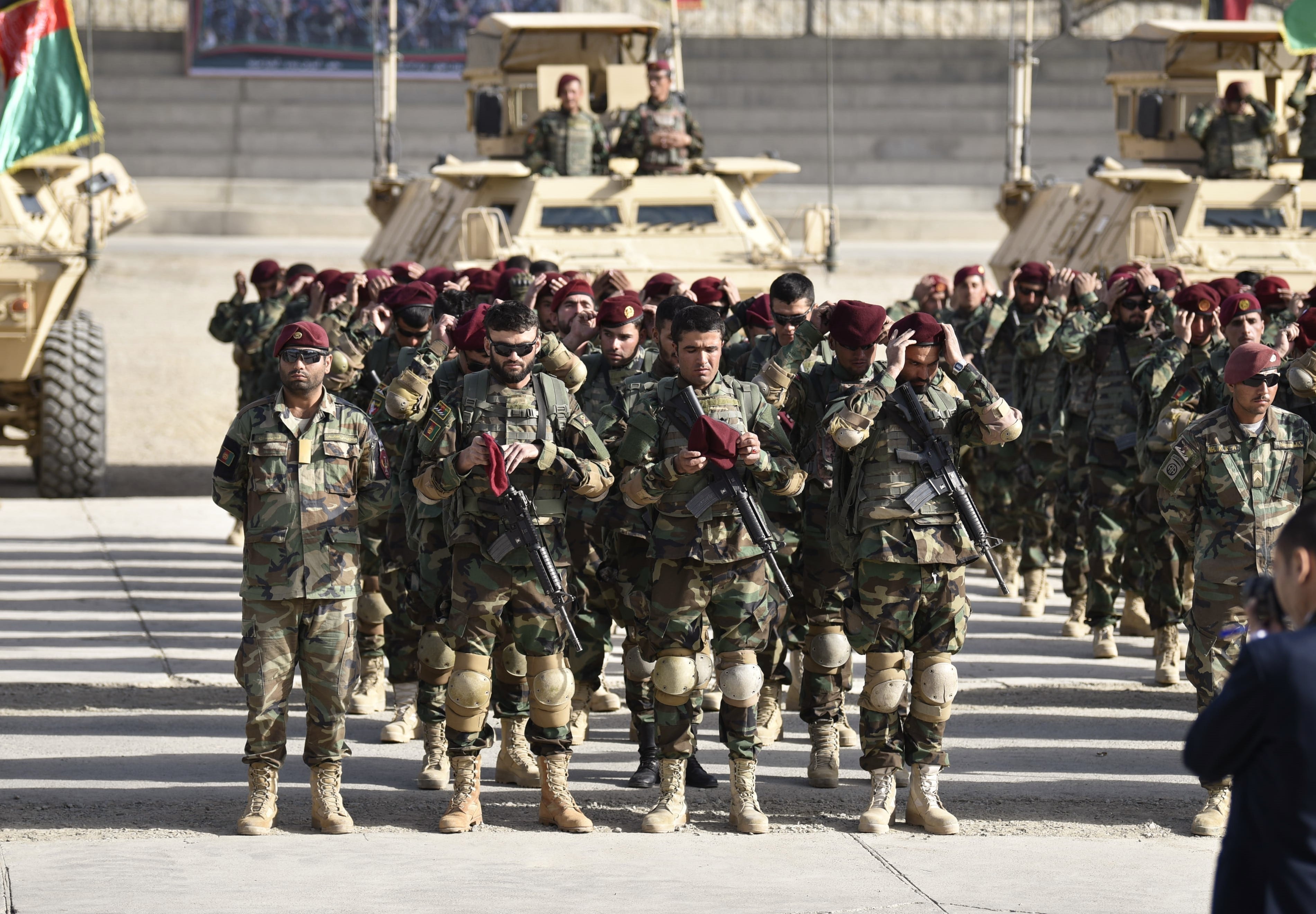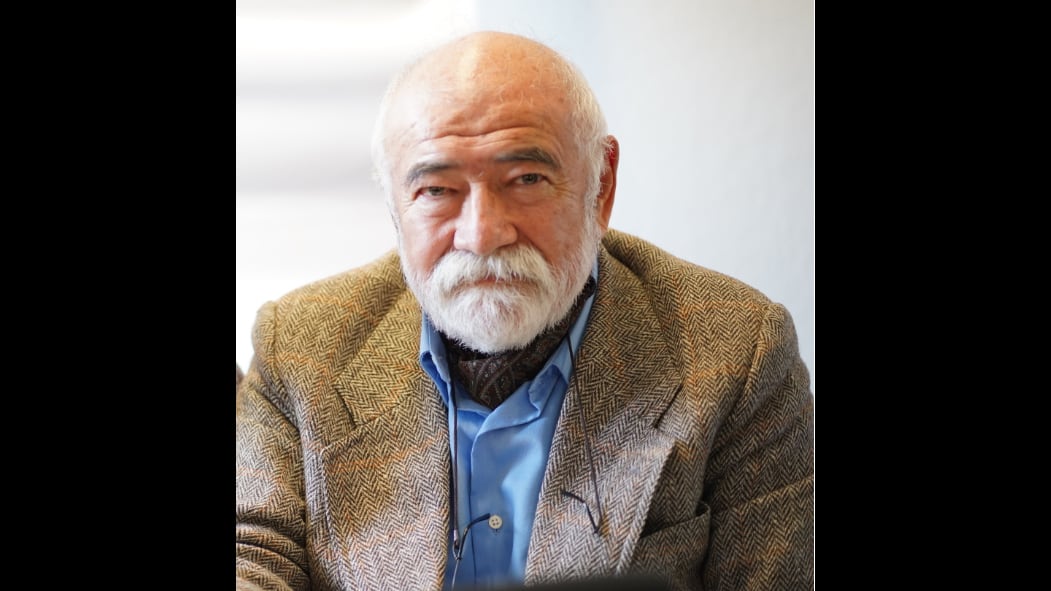As the ninth round of peace talks continues to end the 18-year American war in Afghanistan, Zalmay Khalilzad, the U.S. special envoy for Afghan peace, rejected rumors that the deal might cut aid to the Afghan National Defense and Security Forces (ANDSF), tweeting “We will defend Afghan forces now and after any agreement with the Talibs.”
In the meantime, President Donald Trump on the last day of G7 Summit in Biarritz, France, said “there is no timeline for U.S. forces’ withdrawal from Afghanistan.” Also, Sen. Lindsey Graham on Sunday advised president Trump to leave at least 8,600 counter terrorism force in Afghanistan.
RELATED

The evidence that the U.S. wants a shift in its current political policy in Afghanistan is clear, yet actions should to be taken to fulfill the coalition’s commitments in Afghanistan. For starters the U.S. and its allies should shift peace talks from Doha to Kabul, where the future of Afghanistan will be decided. History shows that deals signed outside of the country have failed to reach their aims.
The government of Afghanistan have been a trusted ally for over 18 years and can be trusted to bring an end to the Taliban insurgency, either by negotiations or by force. The current ANDSF operational strategy, their offensive mindset, and Senator Graham’s proposed 8,600 U.S. and NATO advisers will continue to keep the pressure on the Taliban. If funded, supported, and advised adequately, ANDSF can continue to defeat the Taliban on the battlefield and pressure them to hold talks with Afghan government in Kabul.
RELATED

There was one overarching goal by the largest Taliban supporter after 9/11, and you can see this quiet effort outlined in Steve Coll’s book, “Directorate-S.” One nation used every opportunity after the American liberation of Afghanistan to tell U.S. and NATO nations not to waste money building a capable ANDSF. Their reasons given for stopping ANDSF support varied by nation, but the purpose was always clear: Afghanistan’s enemies knew that a capable and professional ANDSF would prevent the Taliban from using the same insurgency plan that was used to defeat the communist regime previously.
The Taliban militia force of the insurgency, leading a campaign of terror against the Afghan people, were supposed to be able to get strong enough to over-power the Afghan security forces after the U.S.-led coalition left. That did not happen for two reasons. First, the creation of a professional and lethal ANDSF was a priority effort that started just weeks after the U.S.-led invasion and it has continued non-stop for 18 years. Second, the U.S.-led coalition of military, development and diplomacy experts from around the globe did not heed anyone’s advice to keep the ANDSF small and then leave quickly without training them adequately.
The continued efforts of dozens of nations have enabled the ANDSF to become one of the premier forces in the region. The ANDSF is the most respected institution in the Afghanistan government. The ANDSF does not just defend Afghanistan, it is also the primary force facing the global terrorism front line. Despite many states sponsoring the Taliban to destroy ANDSF, and despite thousands of ANDSF lives lost in the past 18 years, the ANDSF have displayed valor, lethality and professionalism, as they continued to grow towards their necessary capabilities. Fighting against over 20 different terrorist groups — who, of course, use different methods, techniques, and tactics on the battlefields — our innovative and proud ANDSF have not permanently lost a single province or city to the enemies. In fact, they have steadily gained territory and caused heavy human and material losses to the Taliban and other terrorist groups such as ISIS-K.
Currently, the ANDSF — particularly the Afghan Special Forces and the Afghan Air Force who are taking responsibly for much of the fighting — are in a good shape, conducting complex independent operations with no or limited foreign support. This record of battlefield success and continuing professionalism is the exact opposite of the communist army that was defeated by the mujahedeen in the 1980s and ’90s. This patriotic military force will not falter and is loyal to the Afghan citizens.
This year, as usual, the Taliban and their terrorist allies tried to launch a campaign of murder and brutality in Afghanistan that they like to call their spring offensive. This year it failed to even start. Let’s see how:
This April, the Taliban attempted to initiate an offensive campaign aiming to gain leverage in the Doha talks with the U.S. via some ground victories. In order to transport their terrorist allies and smuggle drug caravans to Central Asia, the Taliban wanted to overrun a strategic district bordering Turkmenistan. Right after their offensive campaign announcement, they attacked Balamorghab district in Badghis Province located in the northwestern Afghanistan, with a force of over 2,000 fighters. This was their third attempt since 2013 to capture this strategic district, but they failed to do so because the ANDSF denied them victory. Under the command of Gen. Yasin Zia, a new and passionate first deputy for Ministry of Defense, they launched a 10-day air and ground campaign on the Taliban fighters inflicting heavy casualties and clearing the district from the Taliban in the matters of days.
The ANDSF victory in Balamorghab and Taliban’s humiliating defeat, angered their leaders and regional supporters; and to ease this humiliating defeat on the battlefield, they ramped up their attacks on several key districts across Afghanistan in the months of May and July, including Shamulzayi and Mizan in Zabul province, Obe in Herat, Qush Tepa in Jawzjan, and Dila Wa Khushamand in Paktika province. But they have failed to permanently even capture them. If by surprise they were able to gain any ground, they have failed to hold on in those districts. Not only are those districts under government control, the ANDSF have also succeeded in retaking some key districts form the Taliban, including Dehyak and Khuwaja Omari in Ghazni and Bilchiragh in Faryab province.
Also, worth noting that, for the first time, ANDSF have successfully conducted 10 self-planned and self-commanded and controlled “liberating ops,” as they call them, to free ordinary Afghans and ANDSF personnel from the Taliban prisons. As a result, they have freed more than 250 men from the Taliban prisons. From the beginning of the Taliban’s so-called spring offensive, ANDSF have killed more than 24 Taliban shadow governors, battlefield commanders, and senior leaders including Sadar Ibrahim, the Taliban’s Defense Minister and Mullah Manan, their notorious leader in Helmand and other southern provinces.
These ANDSF successes, have significantly affected the Taliban campaign of murder and terror. Therefore, they turned their guns from ANDSF to ordinary Afghans. Recently, the Taliban took responsibility of a bombing that claimed lives of 16 Afghan civilians and injured 105, including 51 children and five women. The angrier and more desperate the Taliban become, the more they lose. Taliban lose not only on the battlefields, but also at the negotiating table. The Afghan government and people are right now considering whether they can allow the Taliban to reenter Afghan society. Atrocities against civilians, especially children are not helping the Taliban in this respect.
This war has been deadly for the ANDSF. It’s been costly for their families, as well. Despite the losses of tens of thousands of police and military members in this war, the morale of the ANDSF has been steadily increasing. The Afghan people have chosen their security forces over the insurgency militants, and continue to send their sons and daughters to join the ANDSF and defend the republic.
In closing, the ANDSF is firmly under the control of the Afghan government and by extension the Afghan people. They stand ready to continue to secure the nation against internal and external threats. It is time for the Taliban to accept the olive branch that the Afghan government is offering. A cease fire and peace talks with the Afghan government will give the Taliban a chance to return to normal life. The Afghan people deserve peace, and the ANDSF are the cornerstone of a durable peace. It’s time for the killing to stop inside Afghanistan, there are many external threats for the ANDSF and its allies to focus on in the region.
Col. Abdul Rahman Rahmani is an Afghan Special Mission Wing pilot by profession and is currently assigned to the Afghan National Security Council staff in Kabul. He is the author of “Afghanistan: A Collection of Stories.” Rahmani is an Expeditionary Warfare School graduate from Marine Corps University.
Jason Criss Howk is an interfaith leader and Islamic studies instructor who has worked on reintegration and reconciliation in Afghanistan since 2002. He is the author of the award-winning book “The Quran: a Chronological Modern English Interpretation” and the co-host of the “We’re Just Talking About It” podcast.
These are their personal views on the war in Afghanistan and neither of the authors speak on behalf of their nations or any organization.
Editor’s note: This is an Op-Ed and as such, the opinions expressed are those of the author. If you would like to respond, or have an editorial of your own you would like to submit, please contact Military Times managing editor Howard Altman, haltman@militarytimes.com.





